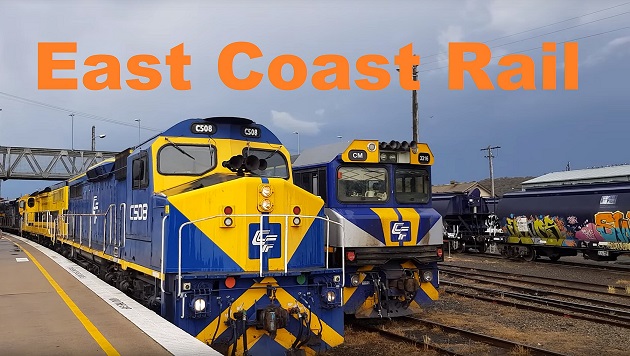The corner track that sits over the server has virtually been laid. On the inside corner will sit a two road container depot sidings. The head shunt for these two sidings will come off two dead end roads that run down the inside of the long baseboard that sits on the opposite side of the room from the loco area. The photo below shows how the tracks will be laid out. This will also form the control panel for the points on this side. It has been decided that only the crossover and points to the loops will be powered. Other siding will be hand operated as they are within close reach of the edge.
 |
Schematic for freight sidings
|
The control panel shows that there will be seven tracks across the long section of baseboard. Unlike the two separate baseboards that form the loco area on the opposite side, this baseboard is just over three metres long. This is partly due to the fact that a bed needs to fit in the room somewhere and the less legs there the better. Once again these boards were constructed outside where there were no obstructions. Pine was used for the framework which is easy to work with. The top was fitted with ply and painted to seal the surface. The colour was just left over house paint and colour was irrelevant as it will eventually be covered up. |
Frame work constructed
|
 |
Top is covered with ply and painted
|
The corner module was taken outside once again and laid up against the long baseboard No 5. This was done so that the tracks could be laid over the two boards to see how the track layout will go. The tracks leading to the container depot will start on board 5 and cross the join between boards 4 and 5. The only way to get the right positioning for this was to have the boards sitting together and the only place at this stage was outside. The adjoining tracks on baseboard 4 in the corner needed baseboard 5 to be finished and set up to be able to run the tracks across the joint. This allowed positioning of the printed circuit board under where the tracks would eventually be soldered and cut for removal one day. |
| Setting out the tracks to see how it all fits |
 |
| Looking down the long board No 5 |
As can be seen in the photos the tracks into the container depot come off the Down Through road. This will mean to shunt this siding there can't be any train in this road to block access. These sidings will provide some interesting shunting and take away the boredom of just going around in circles. If there is a container train running anti clockwise then it will need for the locos to run around and then shunt the train into the various roads, any overflow container wagons will need to be placed in other siding to wait their turn to be loaded/unloaded.Container train on the other hand running clockwise will just use the crossover on board 4, run into the down through road and then shunt back into the sidings. So two scenarios for the two directions.
 |
| Track laying progresses |
Once I was happy with how the track went across the joins and the baseboard had it coat of paint, legs were made and the board moved into the room to be butted up against board 4. At this stage looking around the room is was good to see how the layout was progressing and after the tracks are laid on this board there is only one other board plus the liftout section to go.The first track to be laid across the join was the Up relief track. This then allowed the remaining tracks towards the edge to use this track for spacing. The spacing was done using many offcut sleepers as spacers, this seemed to work well in conjunction with a long steel ruler. You often see layouts with track all over the place and not straight, how hard is it to use a straight edge and make it look right?
 |
| Tracks are finally laid across the join and onto board 5 |
The above photo shows how all the tracks fan out across the two boards. As it was not possible to extend baseboards into the centre of the room it was necessary to have long storage roads along the long wall. And having this baseboard so long meant one set of joins and legs less which had to be good. The use of the diamond crossing adds some interest to the trackwork and I thinks looks good. You can also see the microswitches installed to provide power to the frogs. They will be eventually covered with scenery when that stage is ready.







